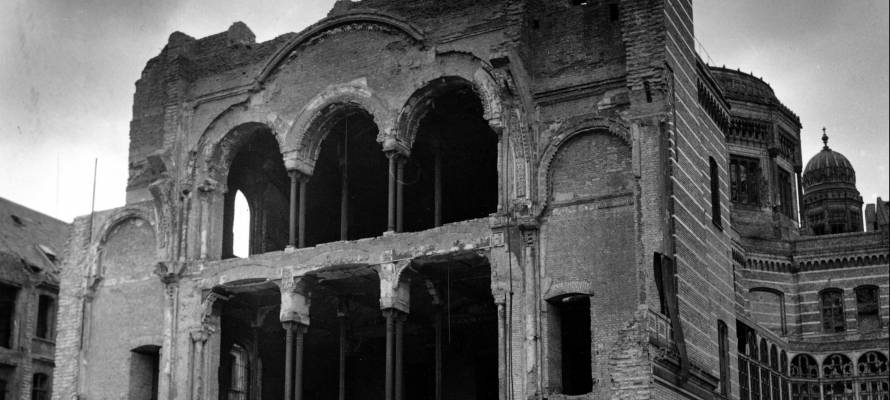Kristallnacht, or “night of the broken glass,” was a horrific event that will remain etched in the minds of Jews forever. On that fateful night, Jewish-owned businesses and synagogues were destroyed by the Nazis and other anti-Semites, in what may have marked the beginning of the Holocaust.
By: JNi.Media
On November 7, 1938, Hershel Grynszpan, 17, a Jewish-Polish student, shot Ernst vom Rath in Paris. Vom Rath, son of an aristocratic family from Frankfurt am Main, who would hence be remembered as the German diplomat shot by Hershel Grynszpan. He joined the Sturmabteilung (SA or Storm Troopers) in 1933, but it was probably a career move, as he was studying law—which didn’t come easy to him, he went through three different universities.
He was accepted into the foreign office, served a stint in Bucharest and then, in 1935, was posted in Paris. A Nazi apologist, he regretted that the German Jews had to suffer, but insisted the anti-Semitic laws were “necessary” to allow the real Germans to flourish (Gerald Schwab, “The Day the Holocaust Began.”).
Grynszpan was upset over news that his family was being deported from Germany back to Poland. He did not know vom Rath. He did not ask for vom Rath by name but only asked to speak to a member of the diplomatic staff. In short, he was looking to kill a German in retribution.
When French police arrested Grynszpan, he cried: “Being a Jew is not a crime. I am not a dog. I have a right to live and the Jewish people have a right to exist on earth. Wherever I have been, I have been chased like an animal.”
Vom Rath fulfilled his role in this drama by dying on November 9. News of the Third Secretary’s death reached the Nazi party brass in Munich. Propaganda Minister Joseph Goebbels urged the gang to take to the streets in familiar Nazi fashion, with the message: the Jews must pay for vom Rath’s death. Later that night, Reinhard Heydrich, head of the Security Service, sent orders to all State Police: Destroy, but do not loot, Jewish homes and businesses, arrest as many Jews, especially the rich ones, as the jails would hold.
The SA shattered the storefronts of about 7,500 Jewish stores and businesses, which is how the name for that dreadful night was born—Kristallnacht (Crystal Night). Jewish homes were looted across Germany and Jews were beaten. Almost all the German synagogues in Germany—about 200—were vandalized and destroyed. Jewish cemeteries were desecrated. More than 30,000 Jewish men were taken to concentration camps Dachau, Buchenwald, and Sachsenhausen. It is believed that 91 Jews were killed in the two-day pogrom.
There were hundreds of suicides in the days that followed. As a result of the brutal treatment in the concentration camps, around 2,000–2,500 deaths were directly or indirectly attributable to the Kristallnacht pogrom. A few non-Jewish Germans, mistaken for Jews, were also killed.
At a press conference on November 15, President Roosevelt said, “The news of the past few days from Germany has deeply shocked public opinion in the United States… I myself could scarcely believe that such things could occur in a 20th century civilization.” The president ordered that the 12,000-15,000 refugees already in the U.S. on temporary visitor visas could remain in the country indefinitely.
More than 115,000 Jews emigrated from Germany following the pogrom, most of them to other European countries, the US and Palestine, and at least 14,000 fled to Shanghai, China.
